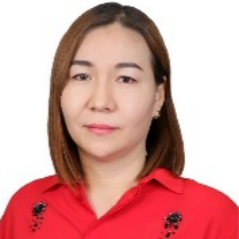International Journal of Computer Network and Information Security (IJCNIS)
IJCNIS Vol. 16, No. 3, 8 Jun. 2024
Cover page and Table of Contents: PDF (size: 839KB)
Method for Constructing Neural Network Means for Recognizing Scenes of Political Extremism in Graphic Materials of Online Social Networks
PDF (839KB), PP.52-69
Views: 0 Downloads: 0
Author(s)
Index Terms
Recognition, Political Extremism, Social Network, Neural Network, Graphic Resource
Abstract
Countering the spread of calls for political extremism through graphic content on online social networks is becoming an increasingly pressing problem that requires the development of new technological solutions, since traditional approaches to countering are based on the results of recognizing destructive content only in text messages. Since in modern conditions neural network tools for analyzing graphic information are considered the most effective, it is assumed that it is advisable to use such tools for analyzing images and video materials in online social networks, taking into account the need to adapt them to the expected conditions of use, which are determined by the wide variability in the size of graphic content, the presence of typical interference, limited computing resources of recognition tools. Using this thesis, a method has been proposed that makes it possible to implement the construction of neural network recognition tools adapted to the specified conditions. For recognition, the author's neural network model was used, which, due to the reasonable determination of the architectural parameters of the low-resource convolutional neural network of the MobileNetV2 type and the recurrent neural network of the LSTM type, which makes up its structure, ensures high accuracy of recognition of scenes of political extremism both in static images and in video materials under limited computing conditions resources. A mechanism was used to adapt the input field of the neural network model to the variability of the size of graphic resources, which provides for scaling within acceptable limits of the input graphic resource and, if necessary, filling the input field with zeros. Levelling out typical noise is ensured by using advanced solutions in the method for correcting brightness, contrast and eliminating blur of local areas in images of online social networks. Neural network tools developed on the basis of the proposed method for recognizing scenes of political extremism in graphic materials of online social networks demonstrate recognition accuracy at the level of the most well-known neural network models, while ensuring a reduction in resource intensity by more than 10 times. This allows the use of less powerful equipment, increases the speed of content analysis, and also opens up prospects for the development of easily scalable recognition tools, which ultimately ensures an increase in security and a reduction in the spread of extremist content on online social networks. It is advisable to correlate the paths for further research with the introduction of the Attention mechanism into the neural network model used in the method, which will make it possible to increase the efficiency of neural network analysis of video materials.
Cite This Paper
Ihor Tereikovskyi, Rabah AlShboul, Shynar Mussiraliyeva, Liudmyla Tereikovska, Kalamkas Bagitova, Oleh Tereikovskyi, Zhengbing Hu, "Method for Constructing Neural Network Means for Recognizing Scenes of Political Extremism in Graphic Materials of Online Social Networks", International Journal of Computer Network and Information Security(IJCNIS), Vol.16, No.3, pp.52-69, 2024. DOI:10.5815/ijcnis.2024.03.05
Reference
[1]Archana N., Saleena B. A Comparative Review of Sentimental Analysis Using Machine Learning and Deep Learning Approaches. Journal of Information & Knowledge Management. 2023. Vol. 22. No. 03:2350003.
[2]Muhammad A., Atiab I., Haseeb A., Hanan A., Jalal S. Sentiment analysis of extremism in social media from textual information. Telematics and Informatics. May 2020. Vol. 48(3):101345. DOI: 10.1016/j.tele.2020.101345.
[3]Yenter A., Verma A. Deep CNN-LSTM with combined kernels from multiple branches for IMDB review sentiment analysis. IEEE 8th annual ubiquitous computing, electronics and mobile communication conference. 2017. P. 540–546.
[4]Rezaul H., Naimul I., Mayisha T., Amit K. Multi-class sentiment classification on Bengali social media comments using machine learning. International Journal of Cognitive Computing in Engineering. June 2023. Vol. 4. P. 21-35. DOI: 10.1016/j.ijcce.2023.01.001.
[5]Xiaodong F., Jie X., Zhiwei T. To be rational or sensitive? The gender difference in how textual environment cue and personal characteristics influence the sentiment expression on social media. Telematics and Informatics. May 2023. Vol. 80: 101971. DOI: 10.1016/j.tele.2023.101971.
[6]Li K., Chen C., Zhang Z. Mining online reviews for ranking products: A novel method based on multiple classifiers and interval-valued intuitionistic fuzzy TOPSIS. Applied Soft Computing. May 2023. Vol. 139: 110237.
[7]Agarwal S., Sureka A. A focused crawler for mining hate and extremism promoting videos on youtube. 25th ACM Conference on Hypertext and Social Media. 2014. P. 294–296.
[8]Bagitova K., Tereikovskyi I., Babayev I., Tereikovska L., Tereikovskyi O. Model for processing images of online social networks used to recognize political extremism. Journal of Mathematics, Mechanics and Computer Science. 2023. Vol. 119, No. 3. P. 91-103. DOI: 10.26577/JMMCS2023v119i3a8.
[9]Ganesh. B., Bright J. Countering Extremists on Social Media: Challenges for Strategic Communication and Content Moderation. Policy & Internet. 2020. Vol. 12(1). P. 6-19. DOI: 10.1002/poi3.236.
[10]Tereykovska L., Tereykovskiy I., Aytkhozhaeva E., Tynymbayev S., Imanbayev A. Encoding of neural network model exit signal, that is devoted for distinction of graphical images in biometric authenticate systems. News of the national academy of sciences of the republic of Kazakhstan series of geology and technical sciences. 2017. Vol. 6, No 426. P. 217-224.
[11]Toliupa S., Tereikovskiy I., Dychka I., Tereikovska L., Trush A. The Method of Using Production Rules in Neural Network Recognition of Emotions by Facial Geometry. 3rd International Conference on Advanced Information and Communications Technologies. 2019. P. 323-327. DOI: 10.1109/AIACT.2019.8847847.
[12]Kurilin I. Fast algorithm for visibility enhancement of the images with low local contrast. International Society for Optics and Photonics. 2015. P. 93950B-93950B-9.
[13]Uijlings J. Selective search for object recognition. International journal of computer vision. 2013. Vol. 104. No. 2. P. 154-171.
[14]Pal K., Sudeep K. Preprocessing for image classification by convolutional neural networks. IEEE International Conference on Recent Trends in Electronics, Information Communication Technology. 2016. P. 1778–1781.
[15]Yubin Z., Yonghang D., Kaining H., Kaining H. An efficient bicubic interpolation implementation for real-time image processing using hybrid computing. Journal of Real-Time Image Processing. 2022. Vol. 19 (6). P. 1-13.
[16]Tereikovskyi I., Chernyshev D., Tereikovska L., Mussiraliyeva S., Akhmed G. The procedure for the determination of structural parameters of a convolutional neural network to fingerprint recognition. Journal of Theoretical and Applied Information Technology. 2019. Vol. 97, No 8. P. 2381-2392.
[17]Vo Hoai Viet, Huynh Nhat Duy, " Object Tracking: An Experimental and Comprehensive Study on Vehicle Object in Video", International Journal of Image, Graphics and Signal Processing, Vol.14, No.1, pp. 64-81, 2022.
[18]Tereikovskyi I., Korchenko O., Bushuyev S., Tereikovskyi O., Ziubina R., Veselska O. A Neural Network Model for Object Mask Detection in Medical Images. International Journal of Electronics and Telecommunications. 2023, Vol. 69, No 1. P. 41-46. DOI: 10.24425/ijet.2023.144329.
[19]Indhumathi. J, Balasubramanian .M, Balasaigayathri .B, "Real-Time Video based Human Suspicious Activity Recognition with Transfer Learning for Deep Learning", International Journal of Image, Graphics and Signal Processing, Vol.15, No.1, pp. 47-62, 2023.
[20]Dong K., Zhou C., Ruan Y., Li Y. MobileNetV2 Model for Image Classification. 2nd International Conference on Information Technology and Computer Application (ITCA). Guangzhou, China. 2020. P. 476-480. DOI: 10.1109/ITCA52113.2020.00106.
[21]Howard A., Menglong Z., Chen B., Kalenichenko D., Wang W., Weyand T., Andreetto M., Hartwig A. MobileNets: Efficient Convolutional Neural Networks for Mobile Vision Applications. arXiv preprint arXiv: 1704.04861. 2017.
[22]Hassan E. Learning Video Actions in Two Stream Recurrent Neural Network. Pattern Recognition Letters. Vol. 151, November 2021, P. 200-208.
[23]Mohammed A., Ming F., Zhengwei F. Color bala Time Video based Human Suspicious Activity Recognition nce for panoramic images. Modern Applied Science. 2015. Vol. 9, Is. 13. P. 140-147. DOI: 10.5539/mas. v9n13p140.
[24]Diwakar, Deepa Raj, "Recent Object Detection Techniques: A Survey", International Journal of Image, Graphics and Signal Processing, Vol.14, No.2, pp. 47-60, 2022.
[25]Ahmad S., Asghar M., Alotaibi F. Detection and classification of social media-based extremist affiliations using sentiment analysis techniques. Hum. Cent. Comput. Inf. Sci. 2019. Vol. 9, 24. DOI: 10.1186/s13673-019-0185-6.
[26]Sureka A., Agarwal S. Learning to classify hate and extremism promoting tweets. Intelligence and Security Informatics Conference (JISIC). 2014. P. 320–320.
[27]Soliman M., Kamal M., Nashed M., Mostafa Y., Chawky B., Khattab D. Violence Recognition from Videos using Deep Learning Techniques. 9th International Conference on Intelligent Computing and Information Systems. 2019. Cairo. P. 79–84.






